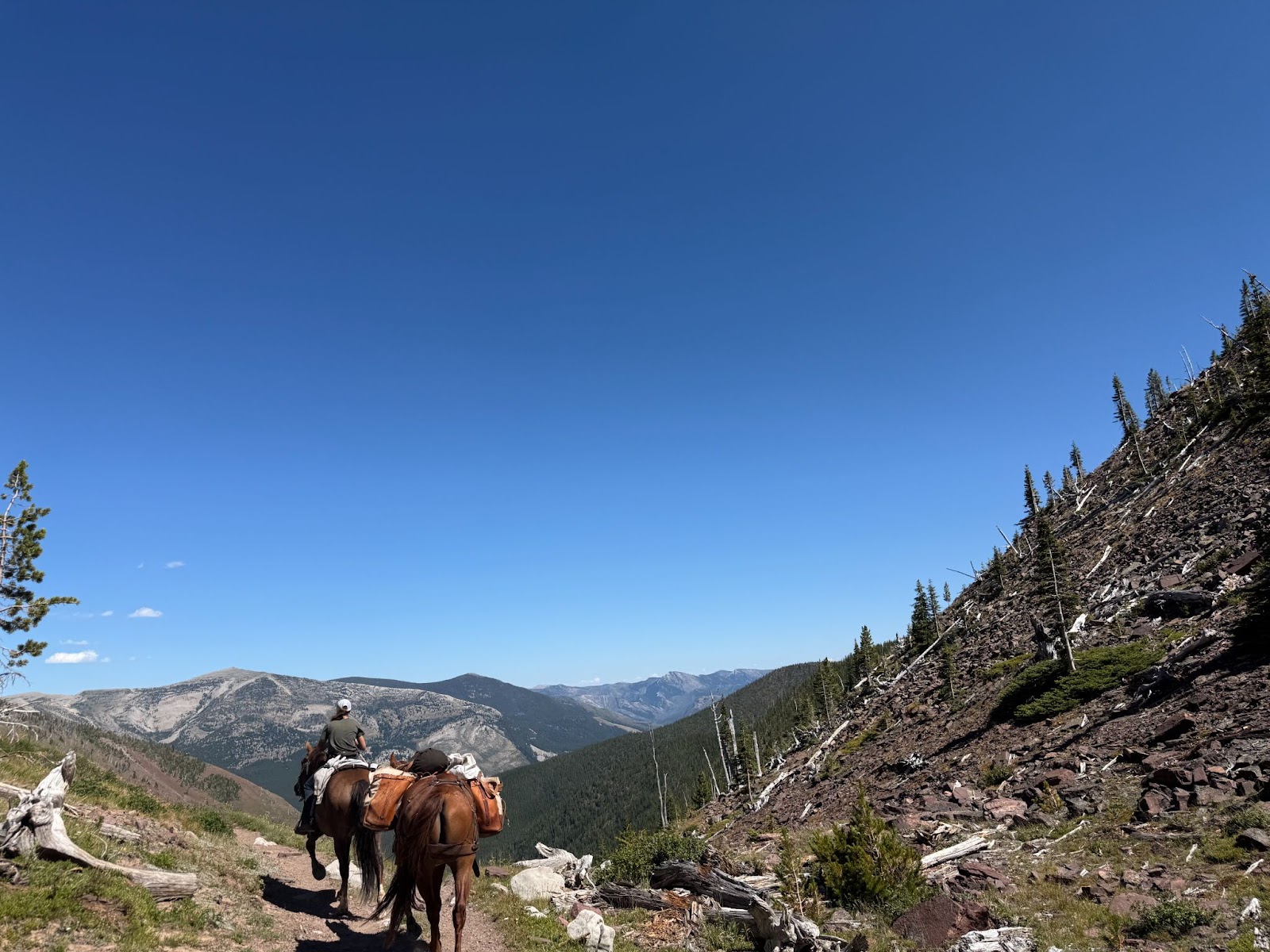
After a week of day rides, rodeos, and late nights in Jackson Hole, Wyoming, we made our way to a friend’s house in Montana. The horses got a well-earned three days of complete rest before we set out for our next big adventure: riding into the Bob Marshall Wilderness—a place none of us had visited before, and one that many people have never even heard of.
This blog is written by Stine Andersen. Check out her Instagram here.
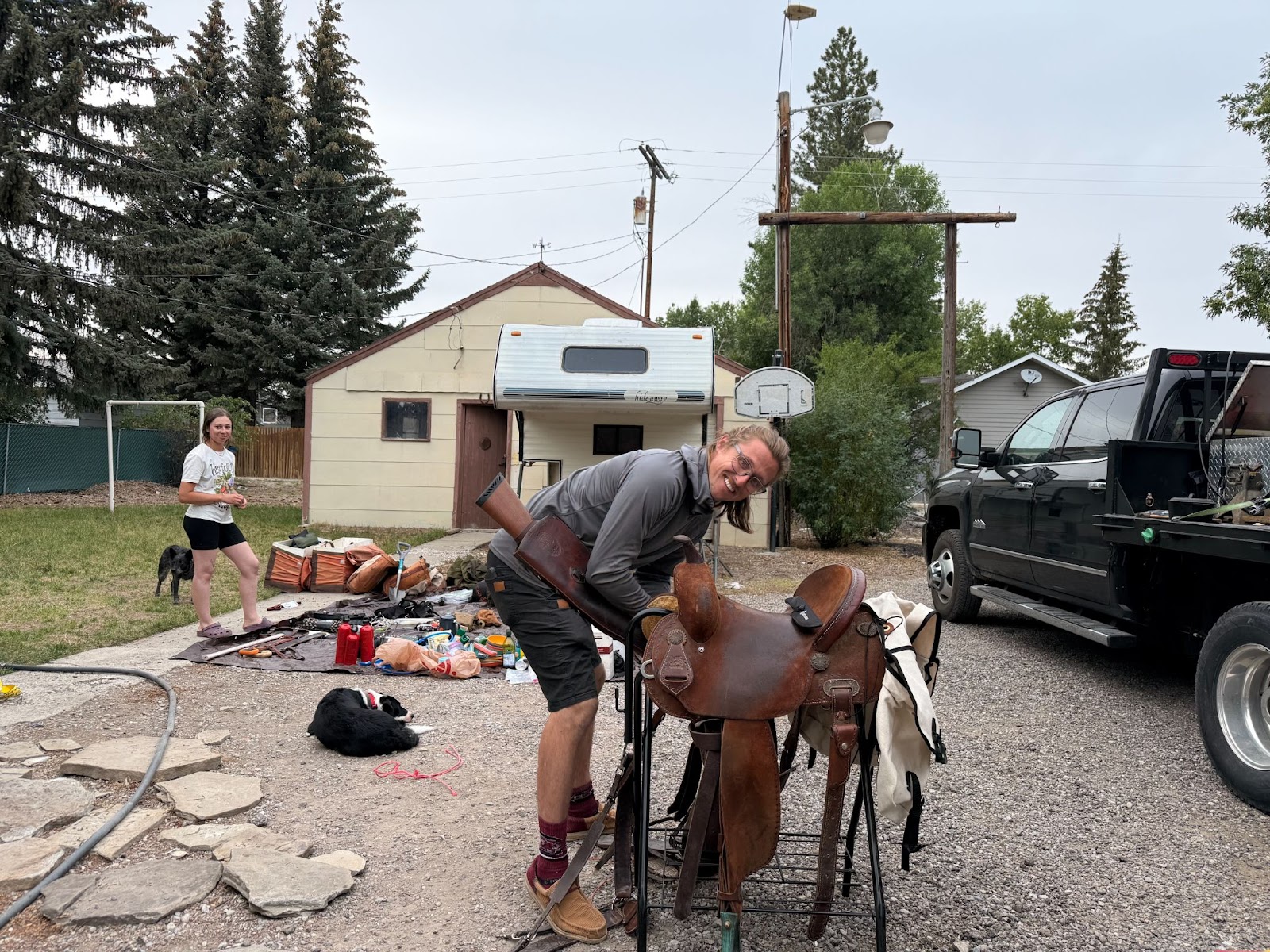
Also read: Trail riding and rodeos in Jackson, Wyoming
The Bob Marshall Wilderness, located in western Montana, spans just over one million acres. It’s a truly remote and breathtaking landscape, filled with rugged peaks, alpine lakes, waterfalls, grassy meadows crossed by shimmering streams, and expansive river valleys. During our six-day trip, we covered just over 60 miles on horseback, riding an out-and-back route. One of the most special things about “The Bob” is that no motorized vehicles or bicycles are allowed—only hikers and horseback riders. Only hikers and horseback riders, which was a nice change from all the mountain bikers in Jackson.
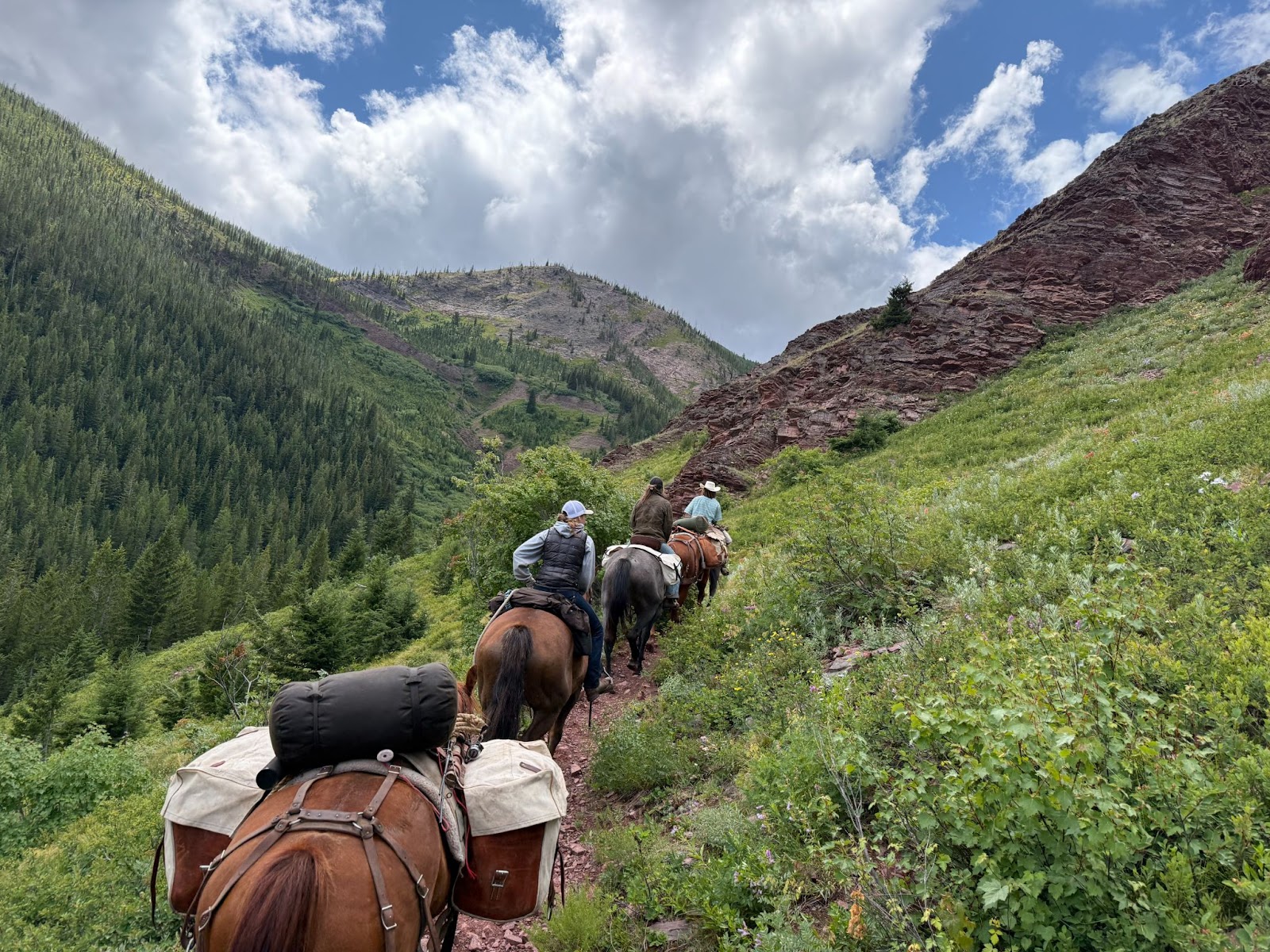
We were a group of six riders, accompanied by three pack horses. Each had a specific role: one carried all the food, another held the tents and sleeping gear, and the third was packed with our high line setup, first aid supplies, and any tools we might need along the way. Dividing the loads this way helped keep things organized.
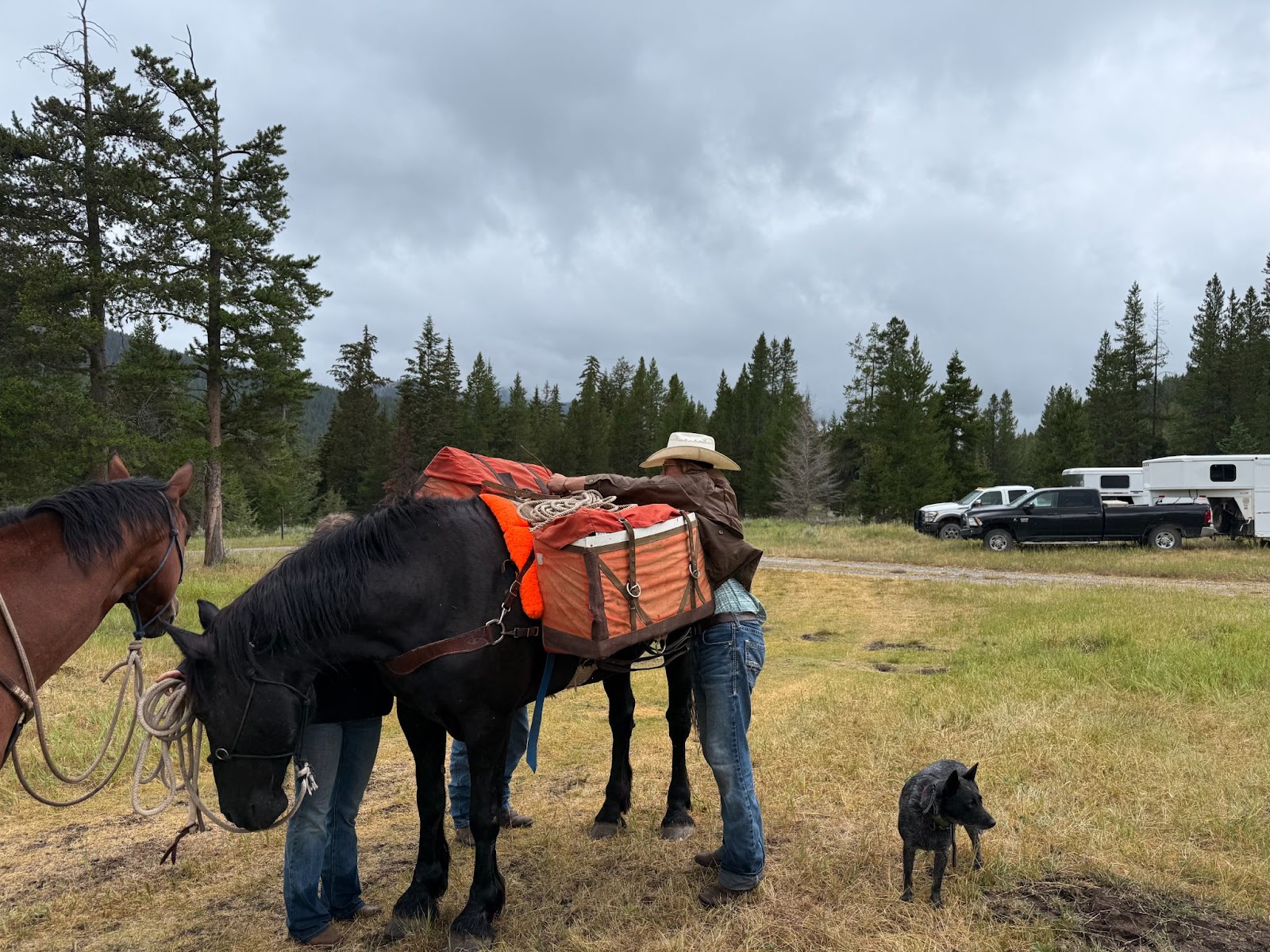
Before setting off, we had a local Montanan come by to help us with packing and prepping the horses. He had been riding and hunting in the Bob Marshall Wilderness since childhood. We couldn’t have been without his advice—he answered all our questions about gear, trail conditions, and what to expect during our time in the backcountry.

We took all the necessary precautions for traveling in bear country. We carried bear spray, pistols and a .45-70 rifle for added security. We didn’t meet any bears, but had been told we were more likely to meet black bears than grizzlies, as the black bear population had grown in the last years and taken over the Wilderness. To reduce risk, we never kept any food in camp overnight. Each night before bed, we hung all of our food, trash, and scented items in a tree well away from camp.
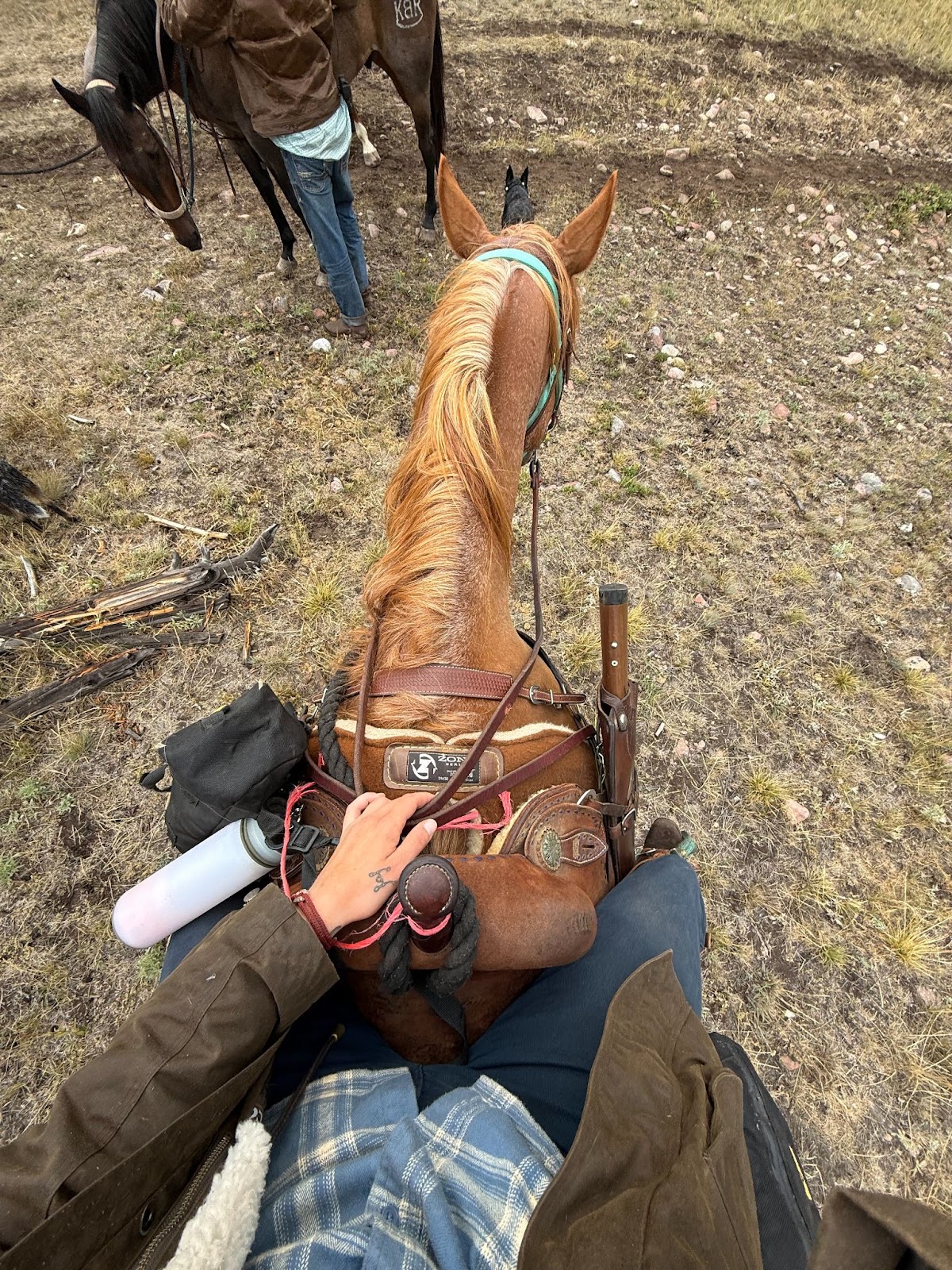
From the feedlot where we were keeping our horses, it was a 2.5 to 3-hour drive to the trailhead. We arrived at our starting point near Benchmark Corral just before noon. After a bit of a rough start getting the pack horses used to their loads, we hit the trail around 1 p.m. Our first day was a slow and steady ride of about five hours.
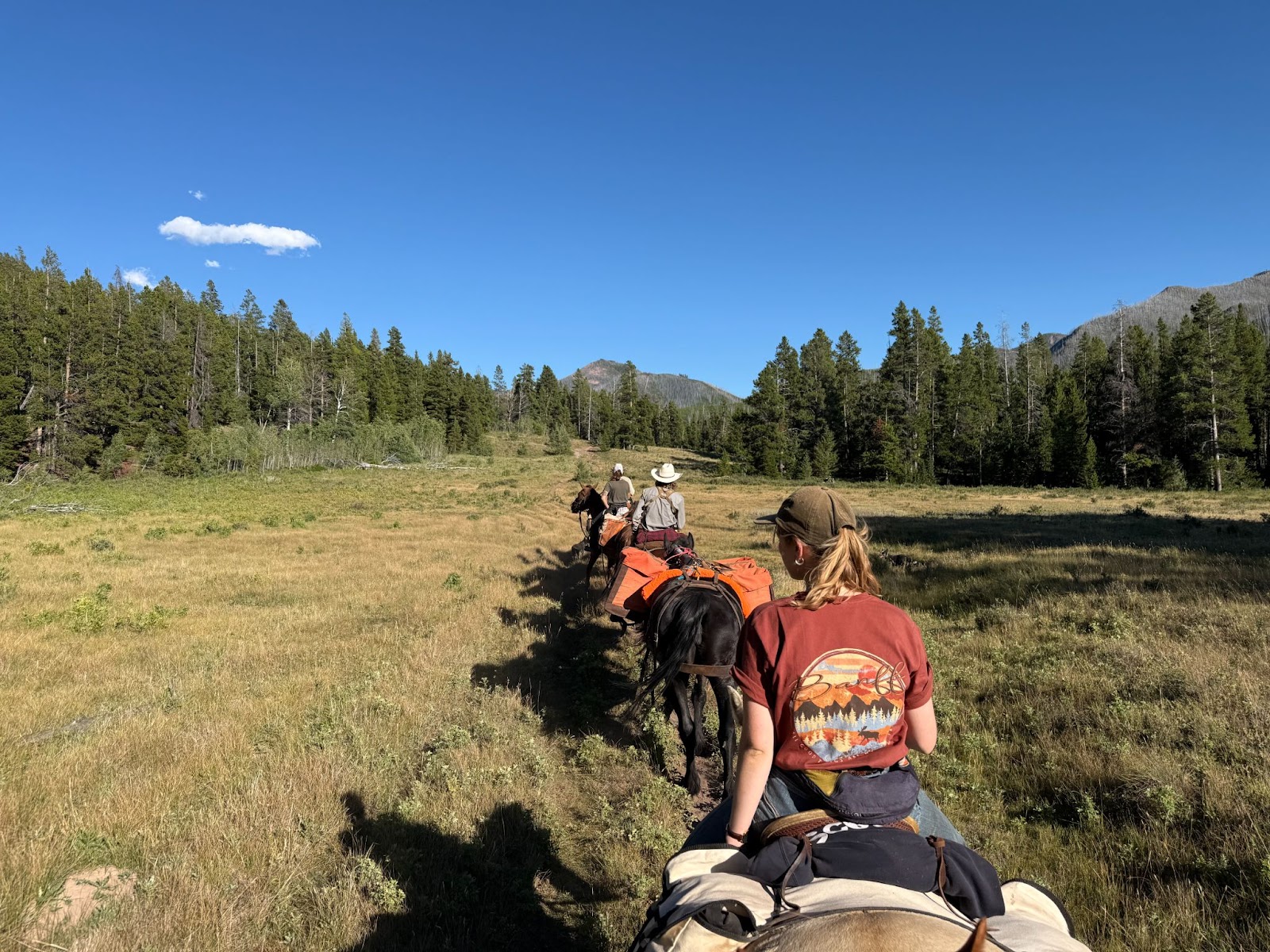
The initial two hours were on a narrow, tree-lined trail that was fairly busy with other riders heading out of the Wilderness. Everyone we met was incredibly respectful—groups would stop and wait for each other to pass, making it a smooth experience despite the traffic.
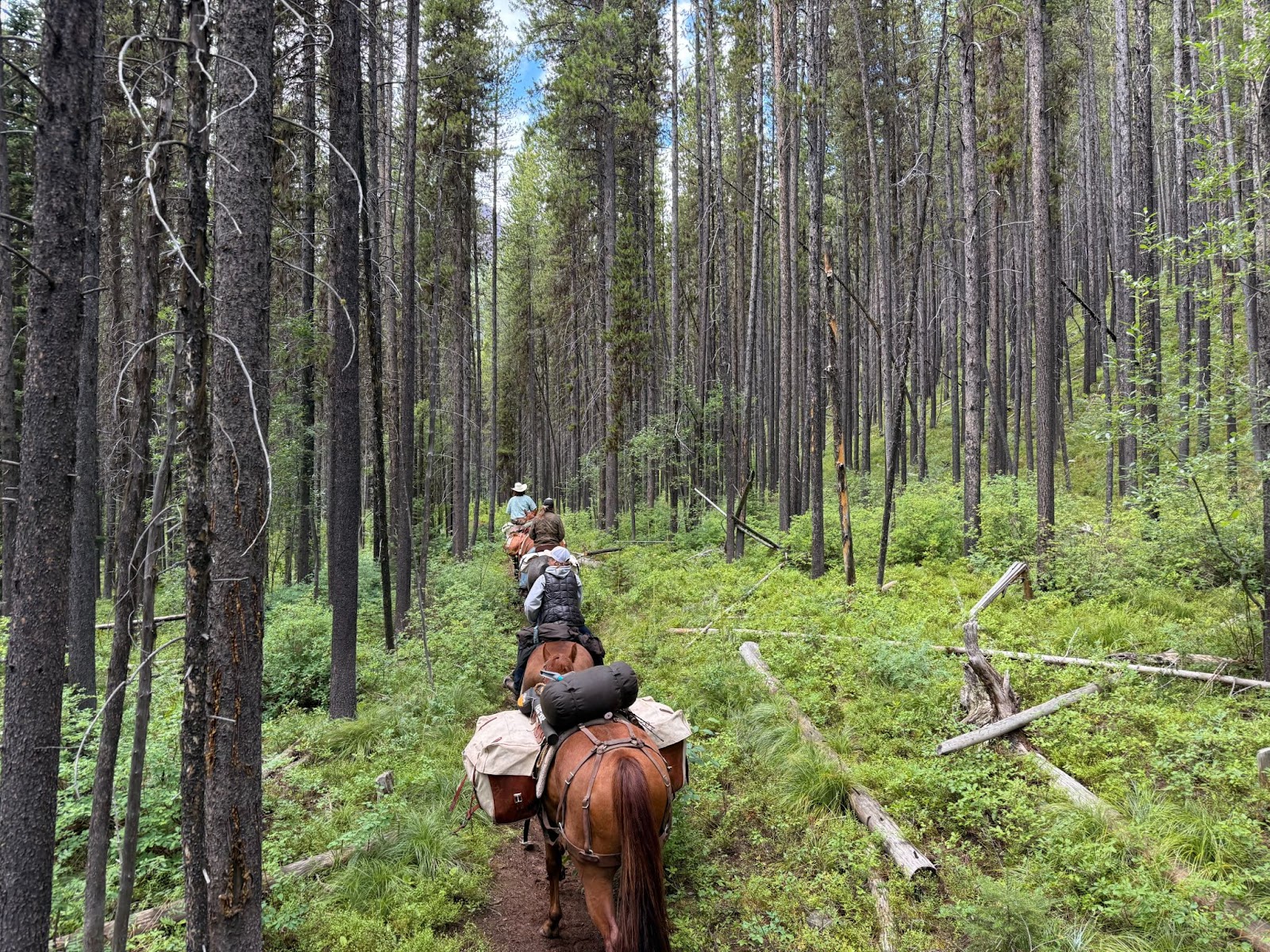
Just after the first mile, we encountered our first bridge crossing. The local Montanan who had helped us prepare had warned us about this exact moment, saying, “This is where you find out if your pack horses are safe or not.” He wasn’t wrong. As you walk over the bridge it starts swinging and bouncing lightly. Even walking next to your horse, it was terrifying to cross. Fortunately, all of our riding and pack horses crossed without any issues! About five miles in, we reached another similar bridge—but by that point, the horses were already used to it and crossed with confidence.
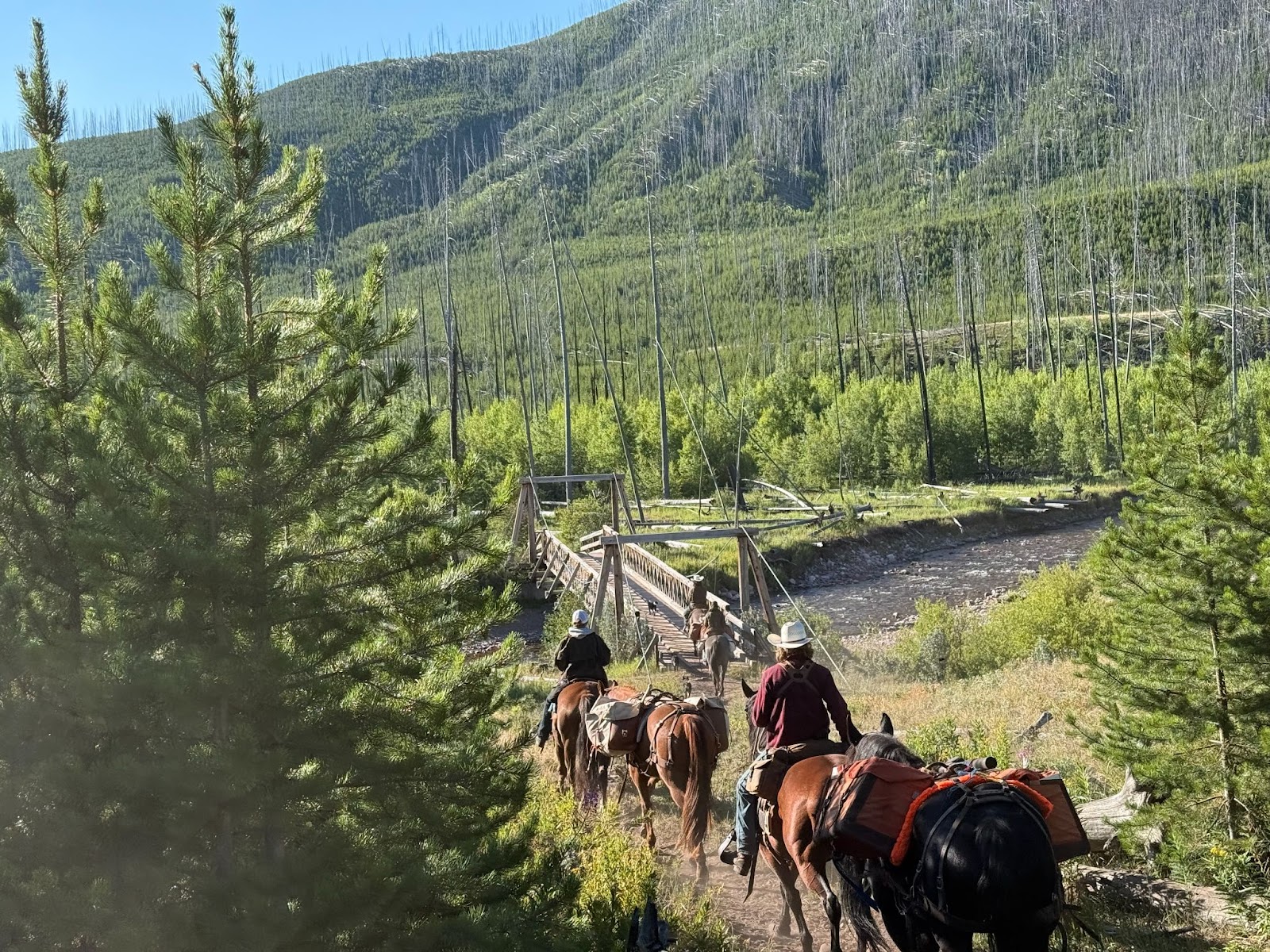
Each night we hobbled or highlined the horses. The first night we camped by West Fork South Fork Sun River and White Bear Creek. There was plenty of grass and we had the river running right next to camp and could easily walk the horses down to drink. There was already a fire pit in place, which we used for cooking. We had come prepared with two axes for chopping firewood, which turned out to be essential.

For cooking gear, we brought along two grill grates, a skillet, a cast iron pan, and two lightweight pots. We also packed a Jetboil for freeze-dried meals, but we only ended up using it once, as we usually would skip lunch and just bring some snacks in our pockets we could take out while riding and not having to stop and untack all the horses once we set off for the day. It made the days feel simpler and allowed us to keep a steady pace on the trail.
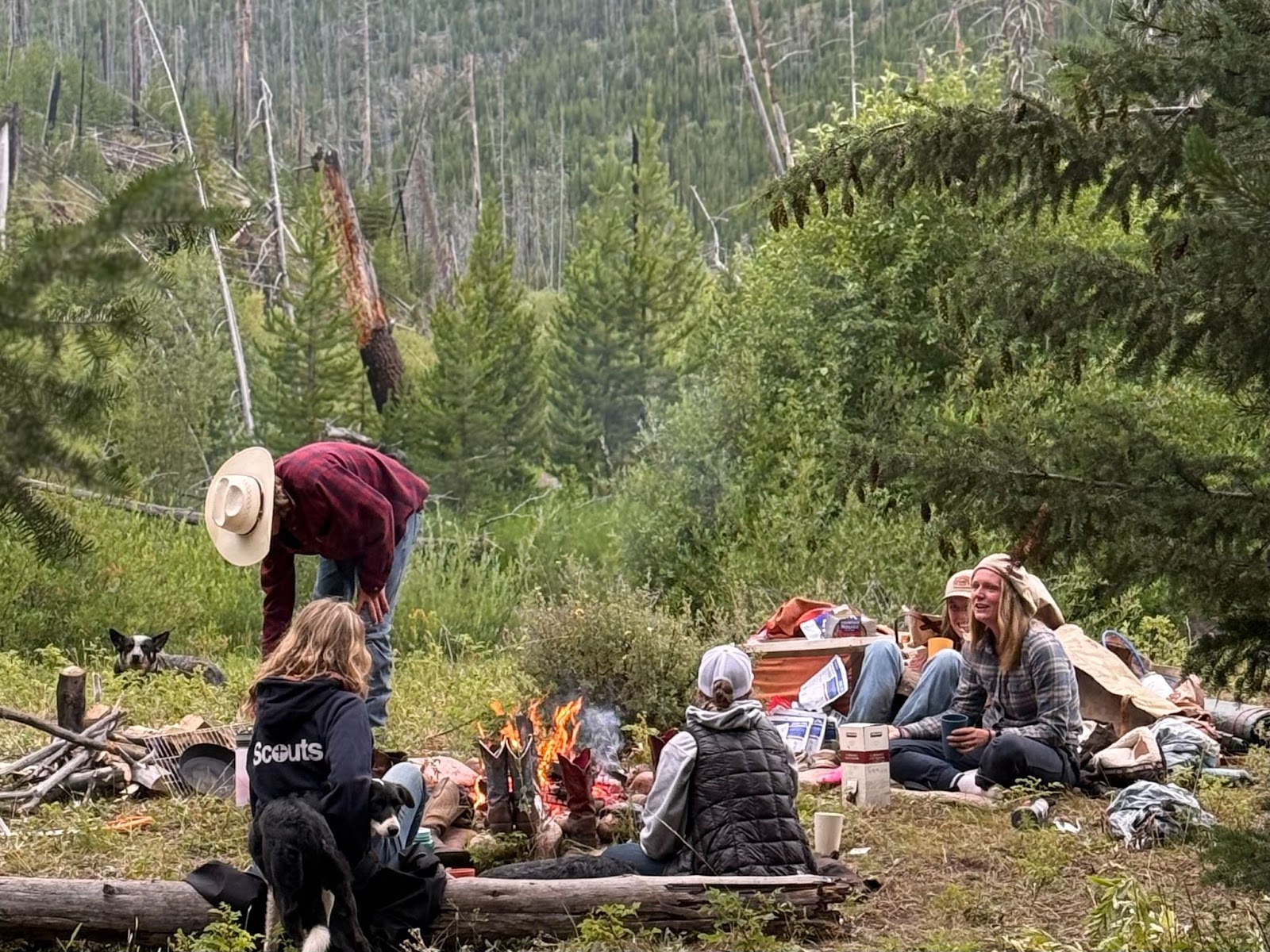
We had prepped a few meals before we headed out but most of our cooking was done over fire. We had a fishing rod and the guys caught fish for us for 3 nights. We aimed for meals that required minimal prep at camp and packed well.
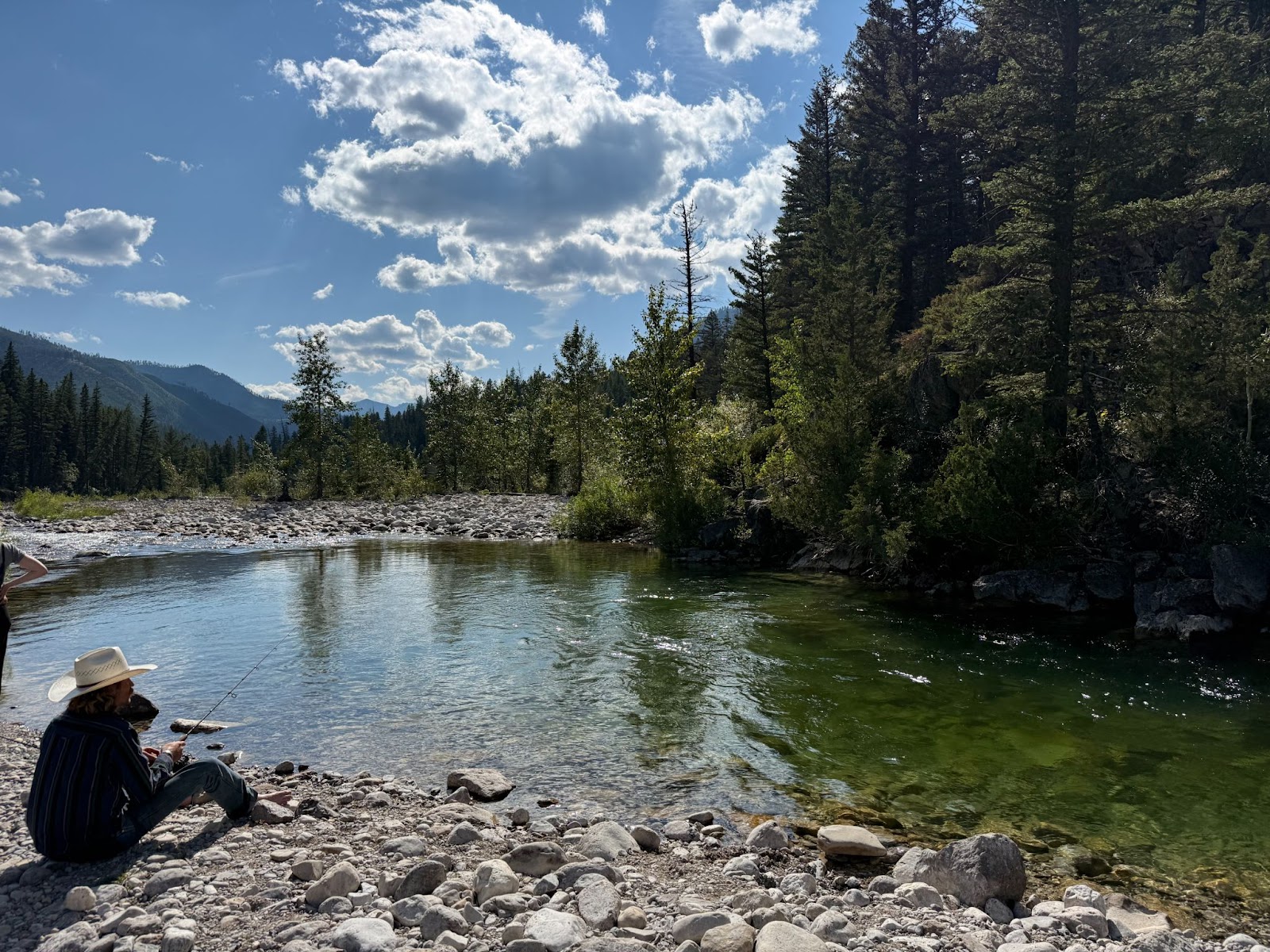
Here’s what we had for dinner during the trip:
Pork chops & mac & cheese – We brought a small cooler with real cheese and eggs, which made the mac & cheese extra creamy
Steaks, fish & pearl couscous with pesto – The couscous and pesto were pre-made at home and packed in airtight containers.
Pasta, chicken and Alfredo Sauce (Chicken and Alfredo Sauce was prepared from home)
For breakfast we had coffee (most important meal of the day), eggs, PB&J and Nutella.
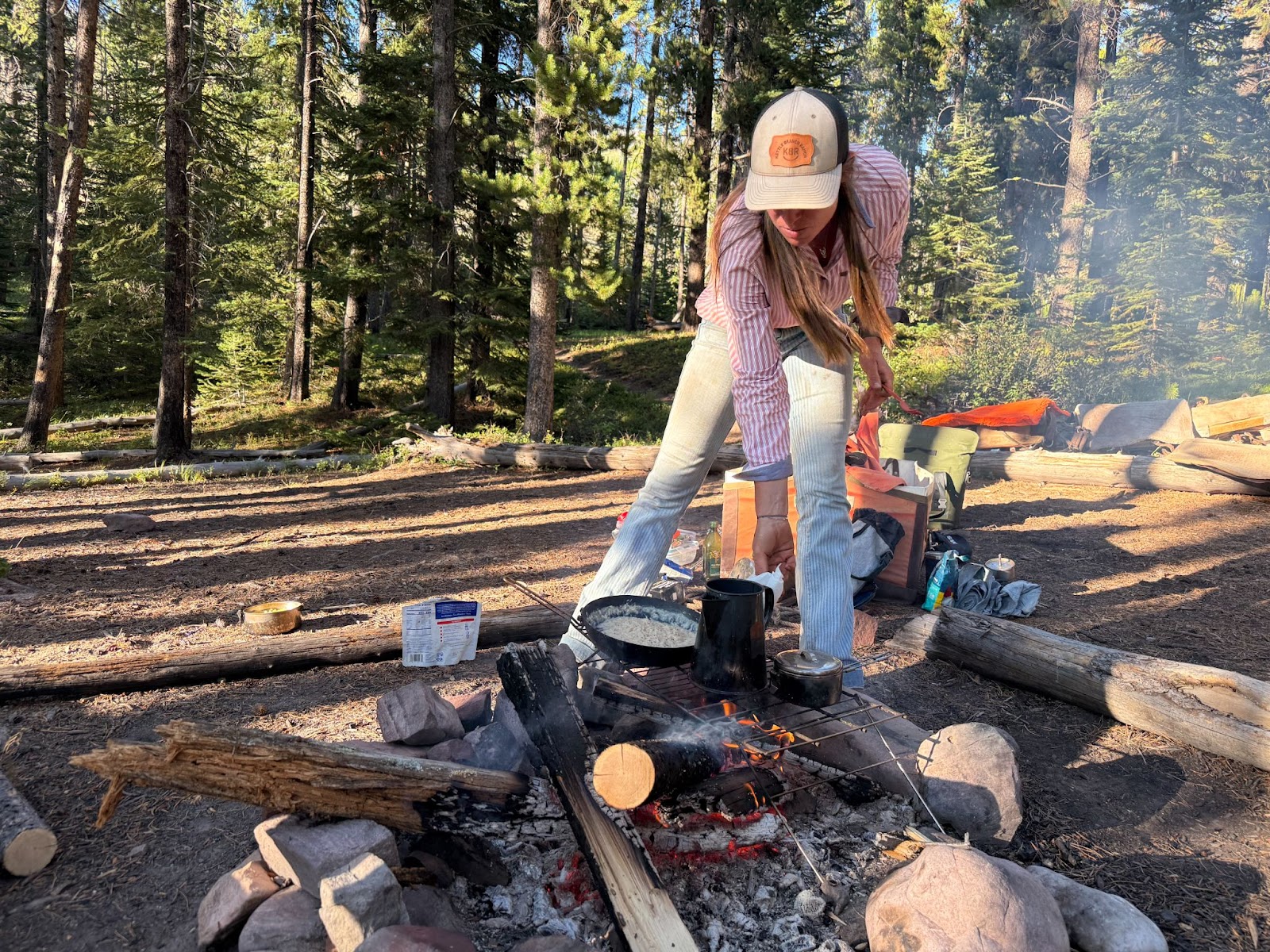
On our second day, we rode for approximately 6,5 hours. This was a long day of riding, as half of it was with a gradual climb that brought us up nearly 2,000 feet in elevation and when we got to the ridge we started descending on the other side. As we were getting closer to the ridge it got cloudy and started raining followed by sleet. We still decided to cross as it was only 5 p.m. and there were no signs of thunder or lightning. As we crossed the ridge and started walking down, the grey clouds evaporated and the sun came through. The late afternoon ended up being beautiful and we could finally enjoy the views!
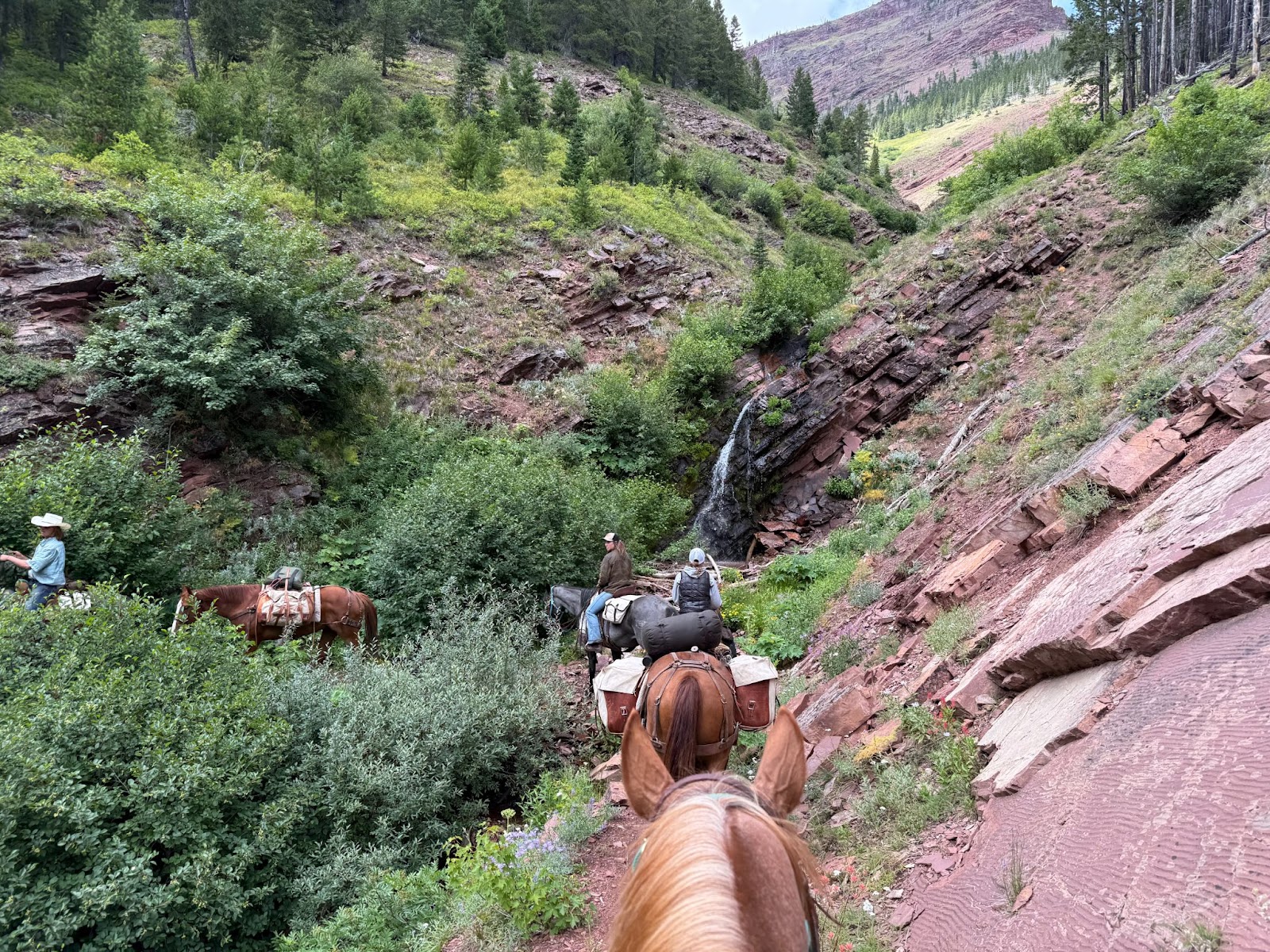
We reached our next campsite just before 8 p.m., right across from the White River. The site had a simple fire pit and a beautiful view of the river. We decided to stay at this camp for three nights, giving the horses a full rest day. On the third day of the trip, we stayed close to camp—swimming, walking, and just relaxing.
We had already been told there wouldn’t be a lot of grass, so we had bought bags of alfalfa cubes from an outfitter who had their camp just up the river.
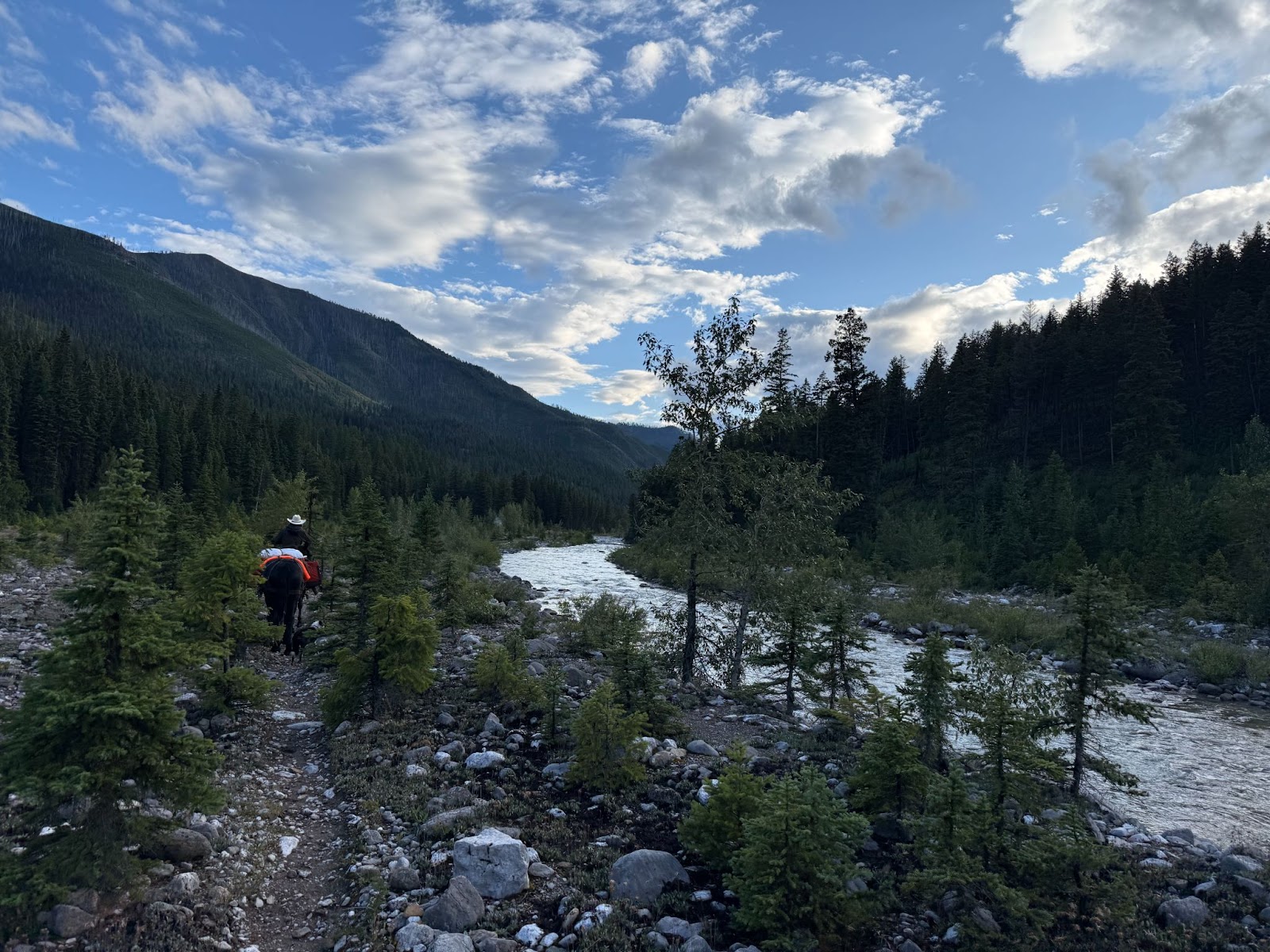
The next day, three of our horses needed some extra rest, so I stayed back with them while the rest of the group rode or hiked up to see the iconic Chinese Wall—a massive limestone escarpment that stretches for miles and is one of the most impressive sights in the Bob Marshall Wilderness.
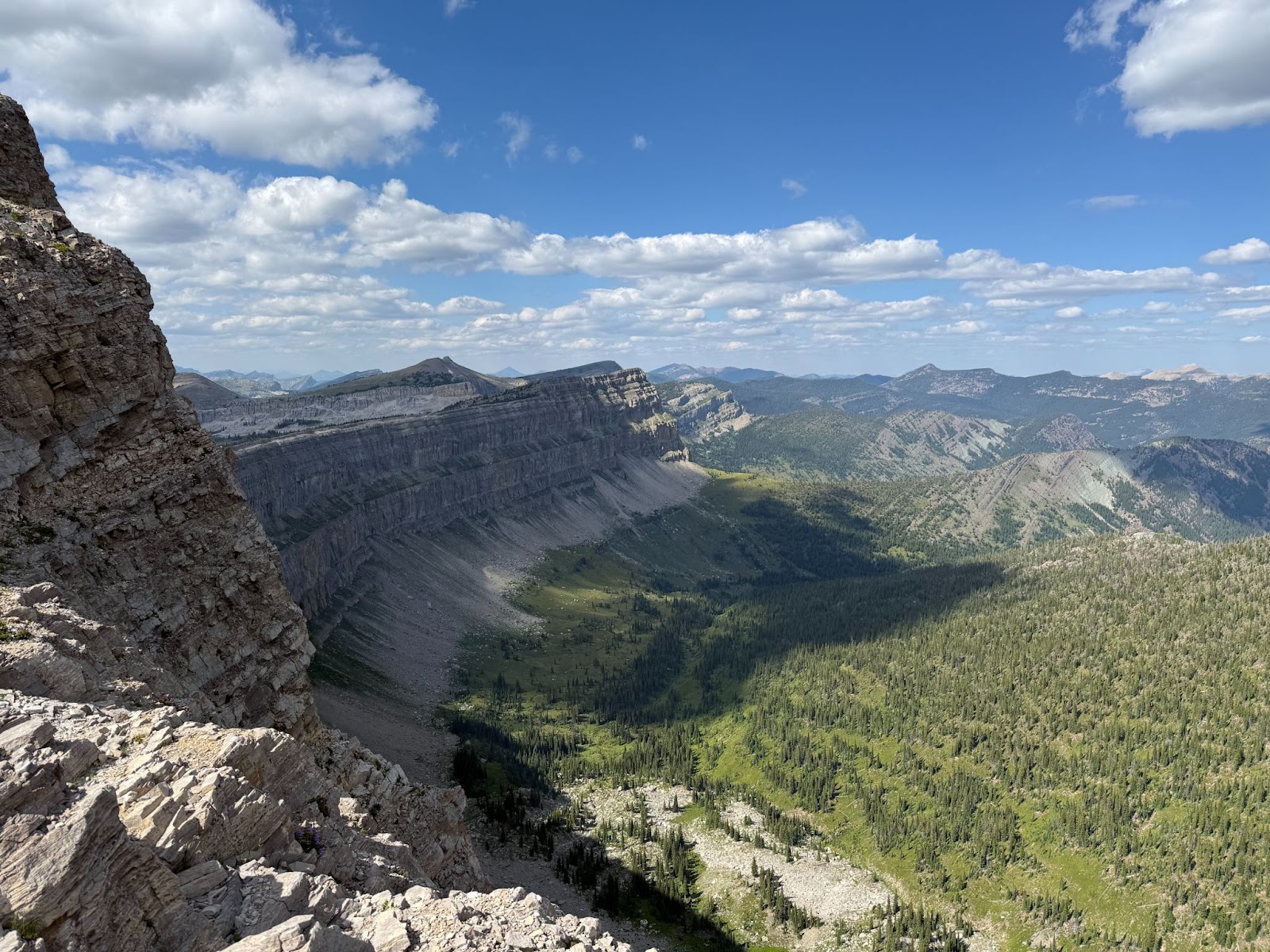
We rode out from our camp at noon and as the horses knew we were going back out it was at a faster pace than when we had gone in. The whole day was sunny and we could take in all the incredible views of the peaks, rivers and valleys. We reached the campsite from our first night around 5 p.m. and we all agreed that we would keep going and see if we could make it back out the same night. At 7:30 p.m. our horses were tired and we rode by the perfect camp spot, so we decided to stop for the night and ride the last 2-3 hours the next morning. We camped by the West Fork South Fork Sun River again just off the West Fork Sun Trail.
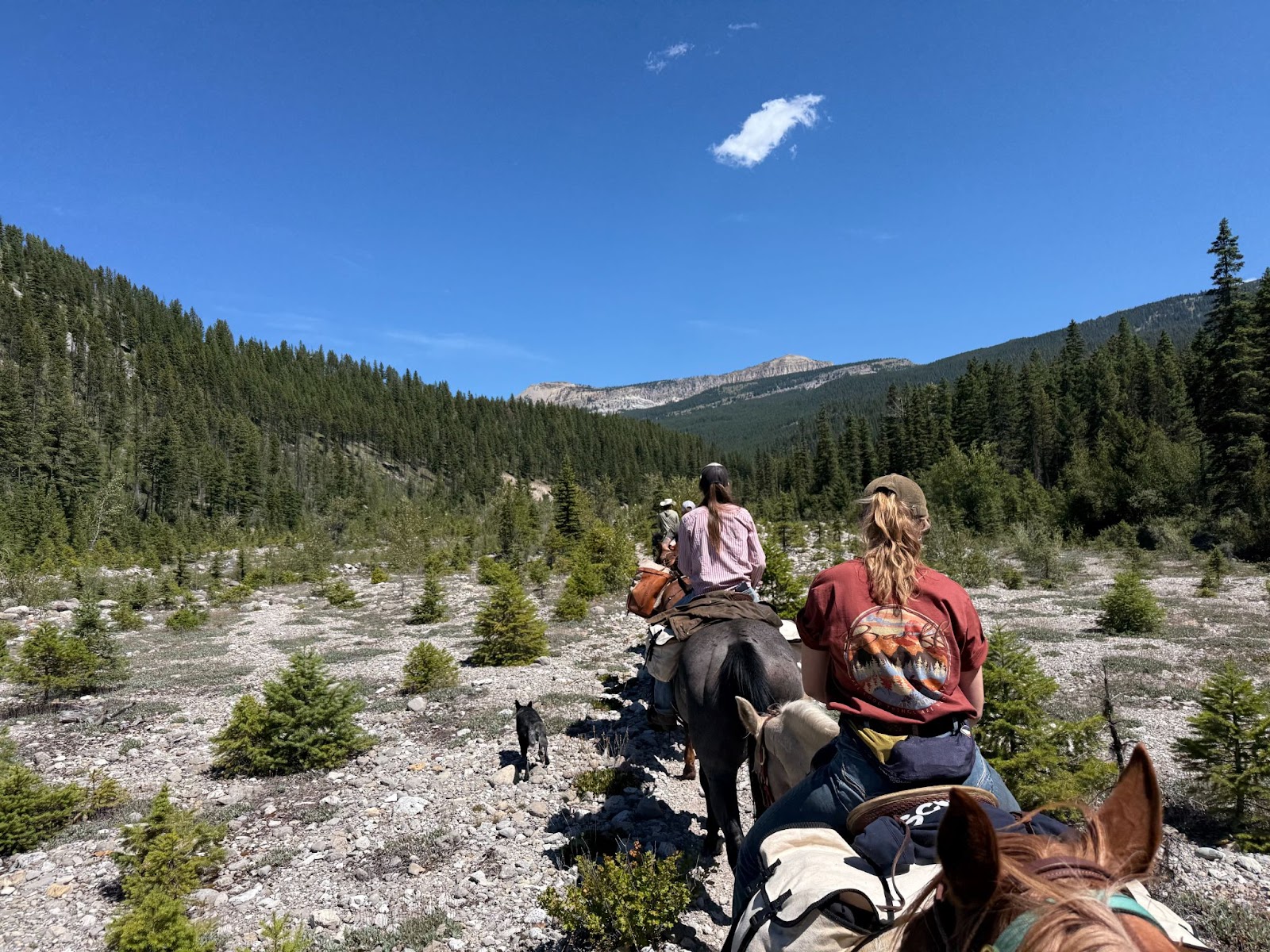
On our last night we prepared all of our leftovers from the week and emptied our wine. As we were determined on heading out early the next morning we packed everything the night before except a tarp and our sleeping bags.
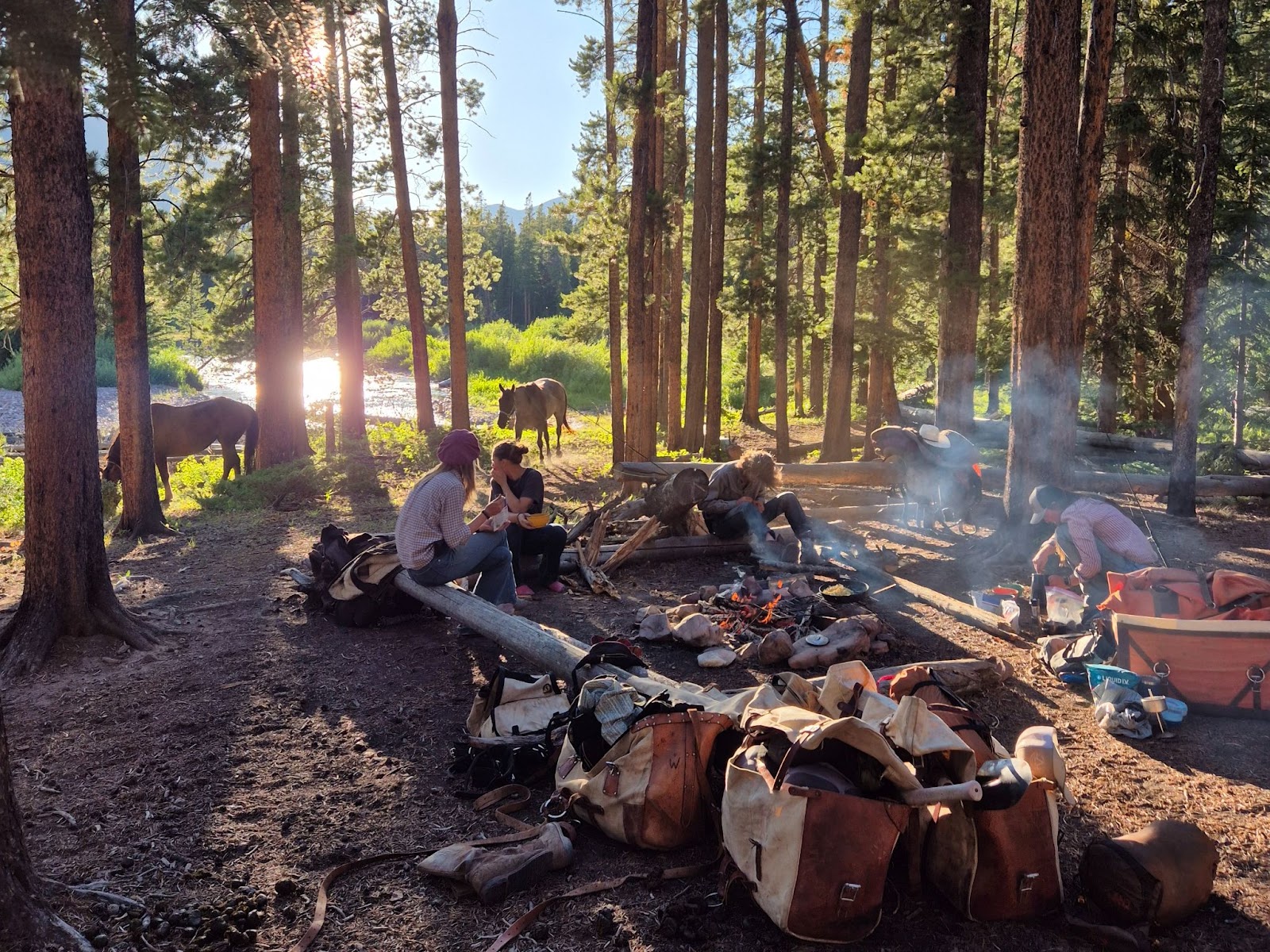
By 6 a.m., we started tacking up the horses and by 7 a.m. we rode out from camp. Three hours later we arrived back at the trailer.
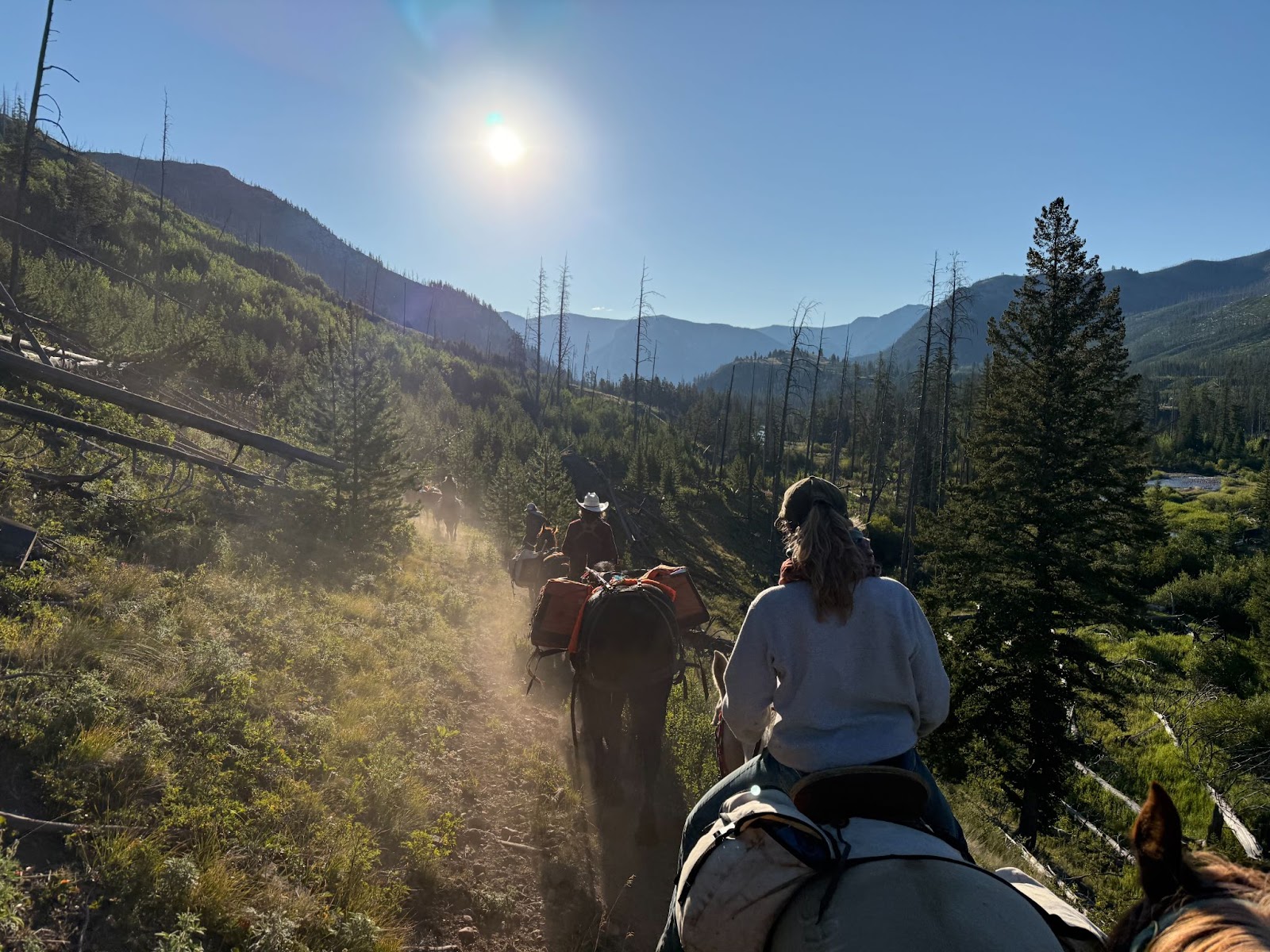
We were invited for a Mexican barbecue in the evening, so this left us just enough time to drop the horses off at the feedlot and shower before we had some of the best Mexican food we’d ever had.
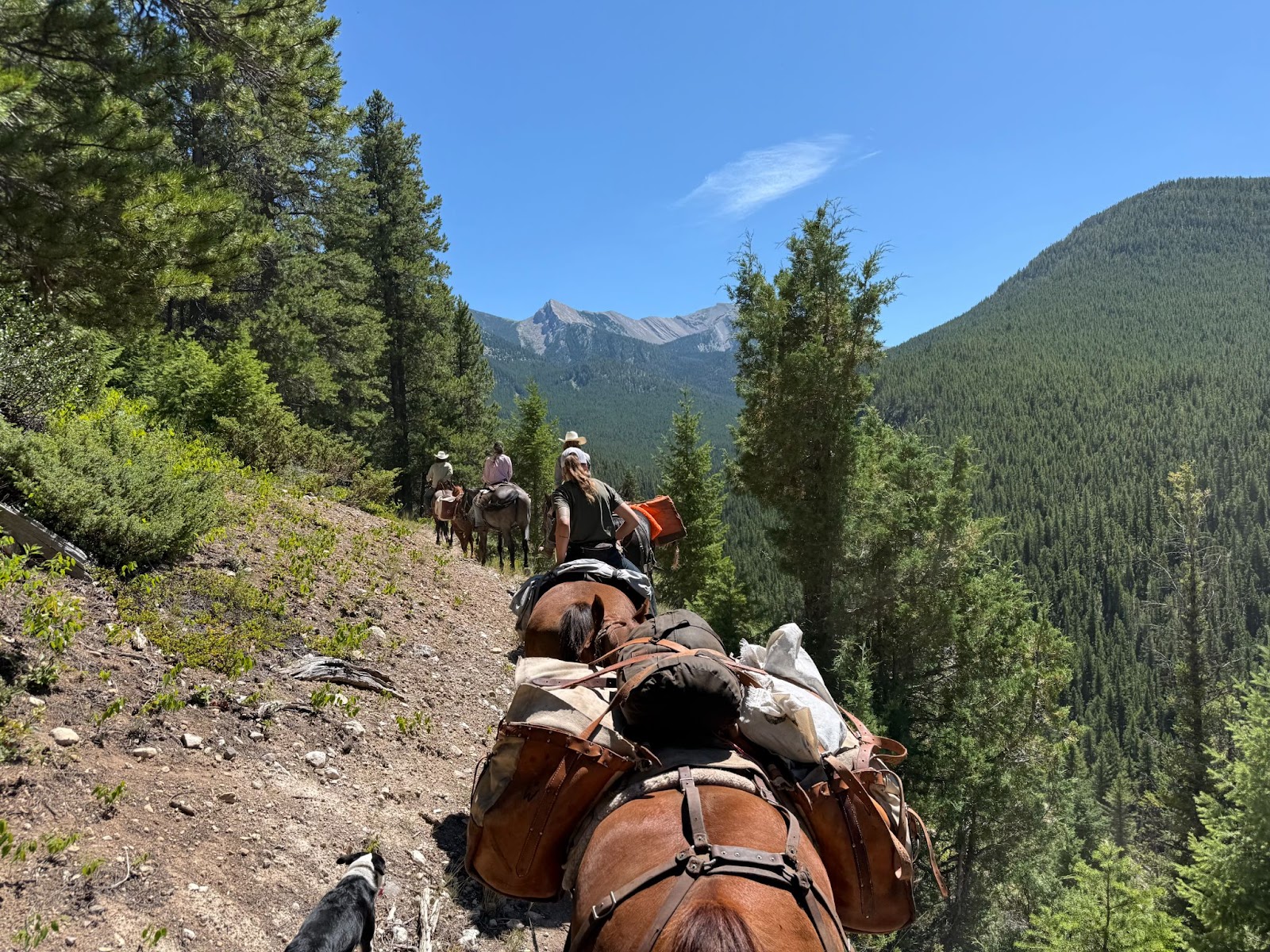
During the week, we met hikers and other riders, but not enough to make it feel crowded. On our first night, we shared the camp with two hikers, though the campsites were separated by trees, so we barely noticed each other. For the rest of the trip, we had the camps all to ourselves. Hikers were very polite and stood off the trail as we would ride by. We had 3 dogs with us, all of them responsive and with shock collars for emergencies (which we didn’t make use of).

Axes: We brought two — a small axe for lighter tasks and a full-sized axe for chopping larger pieces of firewood. Both came in handy for campfires.
Saw: A saw made cutting through longer logs much easier and less tiring than chopping everything with an axe.
Hobbles and/or High line: Depending on what your horses are used to, bring one or both. We used hobbles and a high line every night. There were plenty of trees to tie the high line to, and the hobbles allowed horses who preferred to roam a bit more freedom while still keeping them safe.
Water Filters: We carried two types — a water bottle with a built-in filter for quick refills and a Katadyn pump filter for larger quantities.
Waterproof fire sticks - We made good use of these after two afternoons with heavy rain.
Tarps
Extra ropes - We had brought rope but after the rain and having to use most of it to hang our clothes on, we could have really used a few extra ropes.
Good flashlights / headlamps - It gets dark out there! A headlamp is essential for checking horses in the middle of the night.
Percolator - We could not have been without our coffee in the mornings!

We had brought fly spray, but unfortunately the container broke on the first day… so that was the end of that! We only had two days where flies were really bad, mostly in the morning and early afternoon, and while the horses “survived” just fine, we definitely would have used the spray if we’d had it.

The only horse medicine we made use of was:
We took advantage of the small creeks and cooled down the horses hooves and legs after the longer rides.

If you have any questions about going into the Bob Marshall Wilderness, don’t hesitate to DM me!